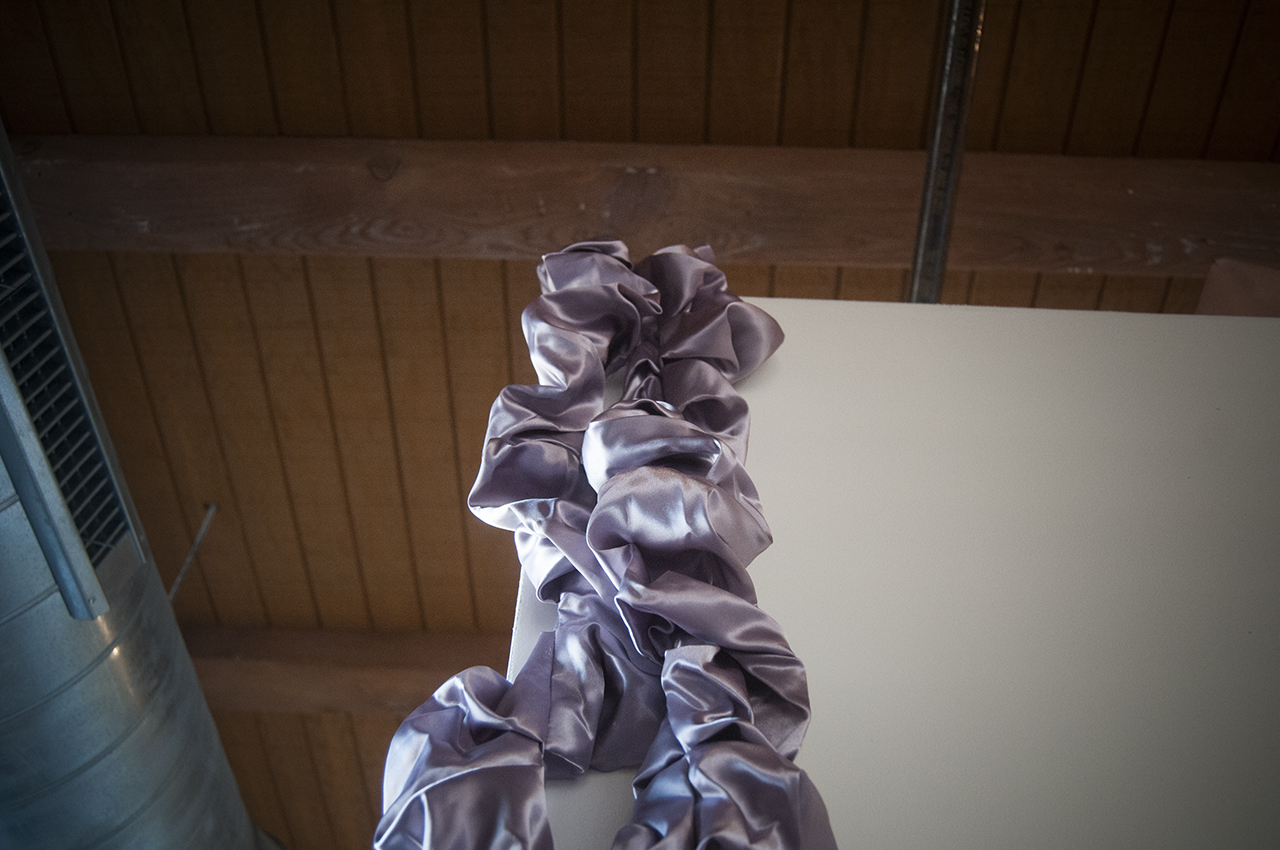Inside\Within is a constantly updating web archive devoted to physically exploring the creative spaces of Chicago's emerging and established artists.
Support for this project was provided by The Propeller Fund, a joint administrated grant from Threewalls and Gallery 400 at The University of Illinois at Chicago.

Search using the field below:
Or display posts from these tags:
3D printing 3D scanning 65 Grand 7/3 Split 8550 Ohio 96 ACRES A+D Gallery ACRE animation Art Institute of Chicago Arts Incubator Arts of Life audio blogging Brain Frame CAKE Carrie Secrist Gallery casting ceramics Chicago Artist Writers Chicago Artists Coalition Chicago Cultural Center Cleve Carney Art Gallery Clutch Gallery Cobalt Studio Coco River Fudge Street collage collection Columbia College Chicago Comfort Station comics conceptual art Contemporary Art Daily Corbett vs. Dempsey Creative Capital DCASE DePaul University design Devening Projects digital art Dock 6 Document drawing Duke University dye Elmhurst Art Museum EXPO Chicago Faber&Faber fashion fiber Field Museum film found objects GIF Graham Foundation graphic design Harold Washington College Hatch Hyde Park Art Center illustration Image File Press Imagists Important Projects ink installation International Museum of Surgical Science Iran Jane-Addams Hull House Museum jewelry Joan Flasch Artist's Book Collection Johalla Projects Julius Caesar Kavi Gupta Links Hall Lloyd Dobler LVL3 Mana Contemporary metalwork Millennium Park Minneapolis College of Art and Design Monique Meloche Museum of Contemporary Art Chicago (MCA) Museum of Contemporary Art Detroit (MOCAD) Museum of Contemporary Photography (MoCP) National Museum of Mexican Art (NMMA) National Resources Defense Council New Capital Northeastern Illinois University Northwestern University Ox-Bow painting paper mache Peanut Gallery peformance Peregrine Program performance photography PLHK poetry portraiture printmaking public art Public Collectors publications Renaissance Society risograph rituals Roman Susan Roots&Culture SAIC screen printing sculpture Sector 2337 Shane Campbell Silver Galleon Press Skowhegan Slow Smart Museum Soberscove Press social practice South of the Tracks Storefront SUB-MISSION Tan n' Loose Temporary Services Terrain Terrain Biennial text-based textile textiles The Banff Centre The Bindery Projects The Cultural Center The Franklin The Hills The Luminary The Packing Plant The Poetry Foundation The Poor Farm The School of the Art Institute of Chicago (SAIC) Threewalls Tracers Trinity College Trubble Club University of Chicago University of Illinois at Chicago (UIC) University of South Florida at Tampa Valerie Carberry Vermont Studio Center video weaving Western Exhibitions wood carving woodwork Yellow Book Yollocalli Arts Reach zinesInside\Within is produced in Chicago, IL.
Get in touch:
contactinsidewithin@gmail.com
Matt Morris: Memory as Gesture

A writer, educator, critic, and artist, Matt investigates the underlying systems that exist beneath that which is most familiar. Working from a studio that also serves as an office and library, Matt allows each to influence the other, transparent about how the many positions he holds are continuously engaged with one another.
I\W: You recently wrote an article detailing the role of the multi-hyphenate, of which you are an example of as well. Do you think this category is expanding because people feel pressure to broaden their definition of their work and practice internally, or increasingly externally?
MM: I think it’s complicated. I really like when Shannon Stratton suggested that many of us have felt the need to adopt multiple positions because the questions we are trying to ask don’t necessarily fit into a specific category. I think there is a lot of that in what motivates me. Someone had mentioned that what Chicago needs is a team of art critics that sweeps across the city on a monthly basis and devotes all of their time to reviewing the art within it. One part of me wants to say that you are living in a dream that has so much more money than the art world will commit to writing. People make so little writing reviews, and in many cases it is just pro bono work. Unless we want positions of art criticism filled solely by the upper class who are already independently wealthy—people who already have another economic platform that they are operating on so art criticism just gets to be a hobby. I would be at least as nervous about us having conversations dictated by a contemporary aristocracy as people who may have muddy relationships across the field. Then the question ends up being about transparency. None of us are hiding any of these relationships we have, but when I think back to the show I did at Peregrine Program in the summer, the press release talked about curating a concurrent exhibition at the Hills which came out of my teaching and trying to make work from the position where my studio is also my office and my library and trying to reconcile those fragments, knowing that the visual objects and artifacts that come out of a space are informed by all the parts. I think part of the work is us trying to reconcile all the ways that we are engaged.
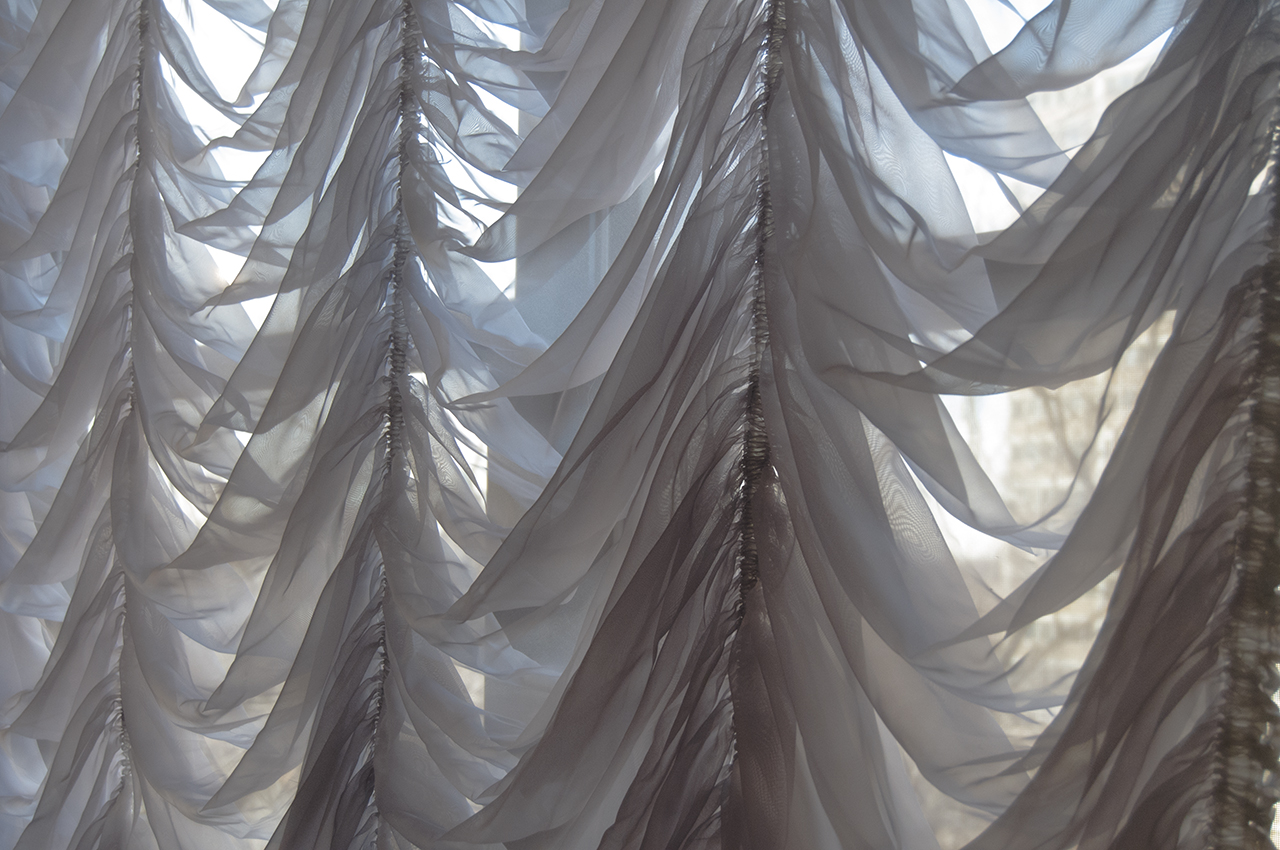
How do you view position as practice?
Some of the positions that I either stand in or question in my work have to do with what underlies the other. A question I have been asking for a long time in my work is, ‘What are the underlying erotic systems that are beneath stabilized institutional positions and voices?’ There are all of these familiarities and intimacies that intone and sort of underpin the way that larger political economic systems operate. Where does sexiness come in underneath that? In the reverse, in the past few years I am becoming curious about where subjectivity is also a commodity, and to take on an identity is already performing a position in capitalism. I am not exactly trying to change it—where my work does or does not relate to activism I am not sure yet. It is more about a critique, rendering these features visible. It doesn’t seem like my work yet to propose how it should be different because I am still trying to wrap my head around what’s going on. I am trying to find where I relate to things that seem disparate from one another. Sometimes there are these surprises in my research where seemingly disparate elements have actually been connected all along, and my instincts were correct. What are the culture fragments that are always spinning through that gather temporarily enough to be me or you? That becomes one of the nods of the work, understanding that perspective, and it is a bit like a disco ball. It is this geometry, but it is always reflecting and pulling in and then spraying back outward all of these little bits.
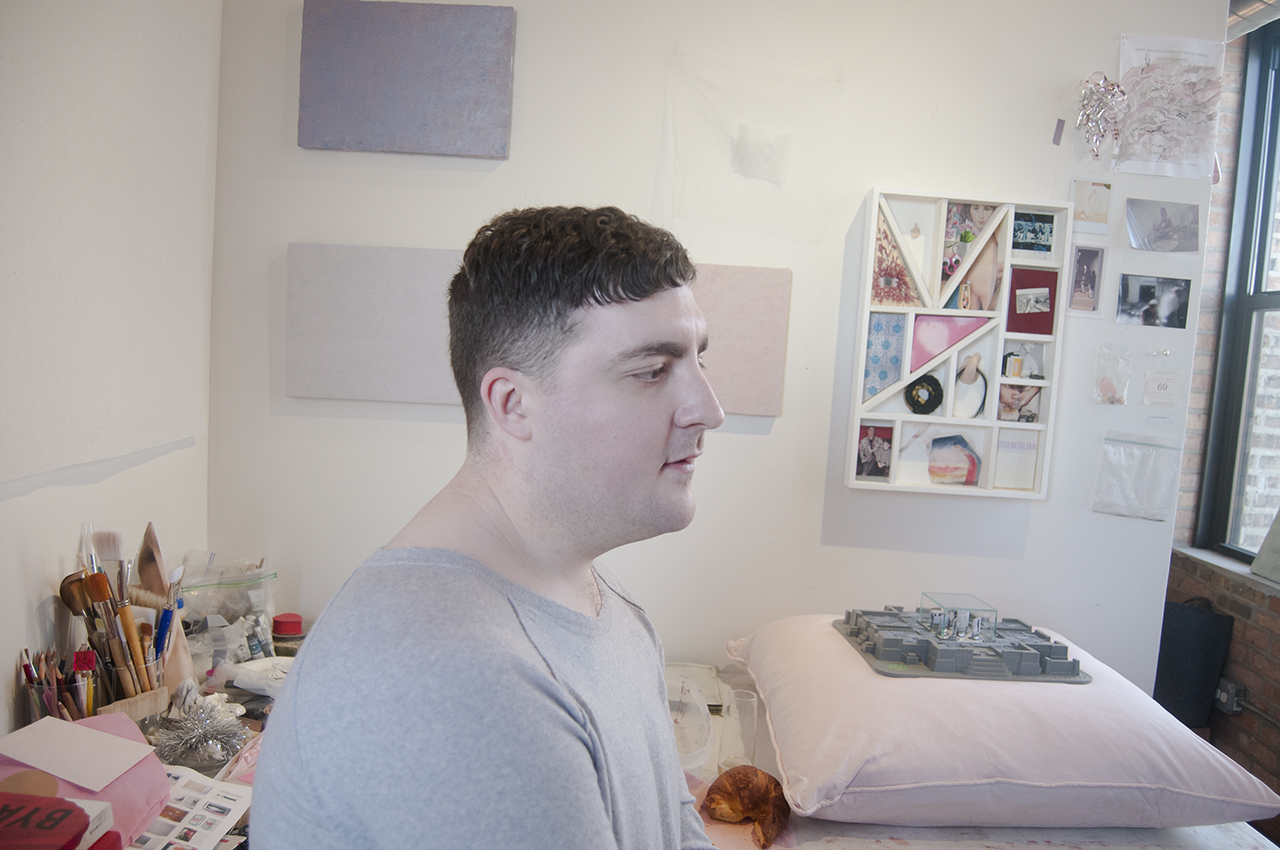
Your work involves a lot of circles, what does this imagery translate to within your practice?
Whatever meaning I am ascribing to a circle is really a calling forward of events and moments that have happened in art history and pointing back to where the circle has been mobilized. Where does it get associated with the feminine? It comes up from a lot of places for me. I am thinking of laying them beside each other and seeing what happens. Before Agnes Martin painted grids she painted circles, and obviously Michelle Grabner comes into my head as well. Maybe both of those women are thinking about this too. A book by Monique Wittig, who is a feminist and gender theorist, worked with a typesetter to create a circular form that repeats throughout her book called Les Guérillères. My referencing of circles is not just about feminism, but also about glory holes and mouths and erogenous zones, and in many cases it is almost always quoted from specific sources.
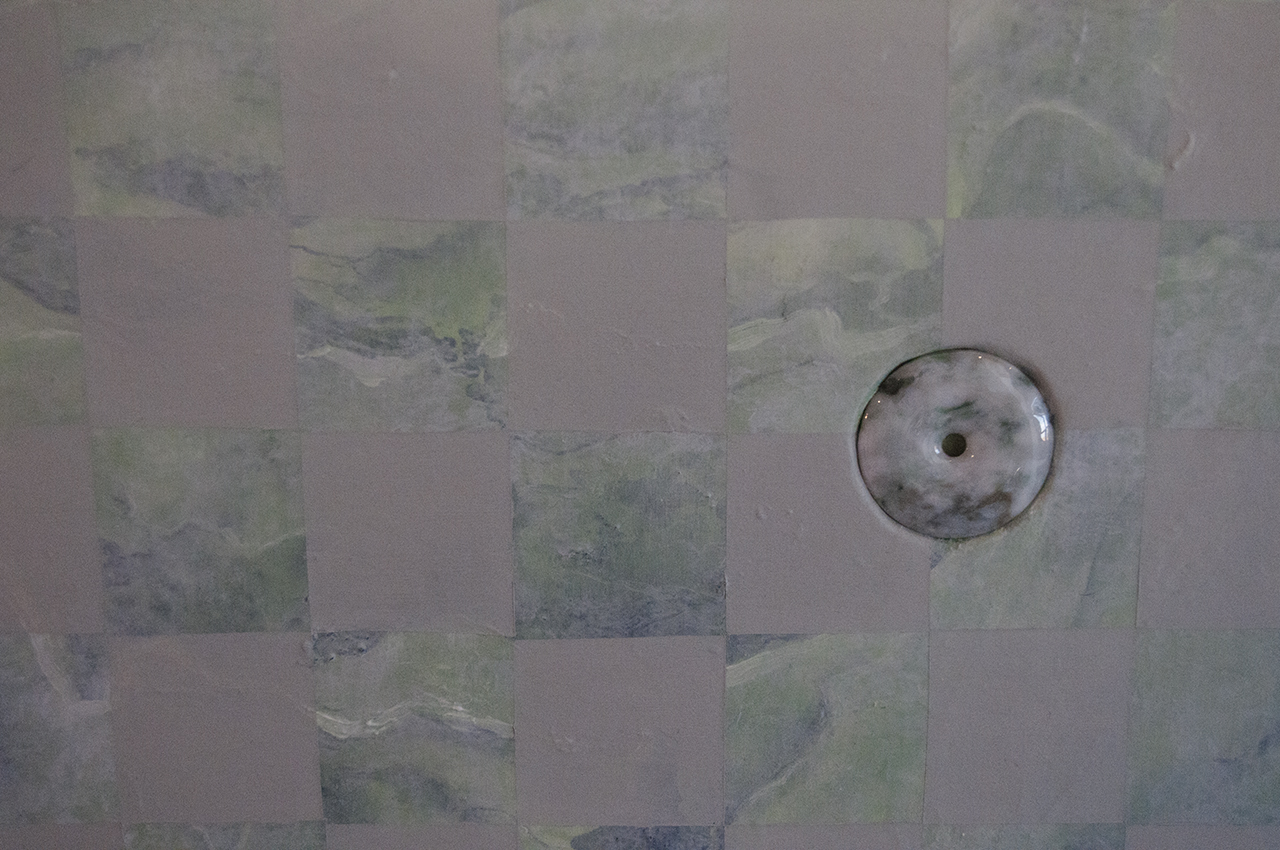
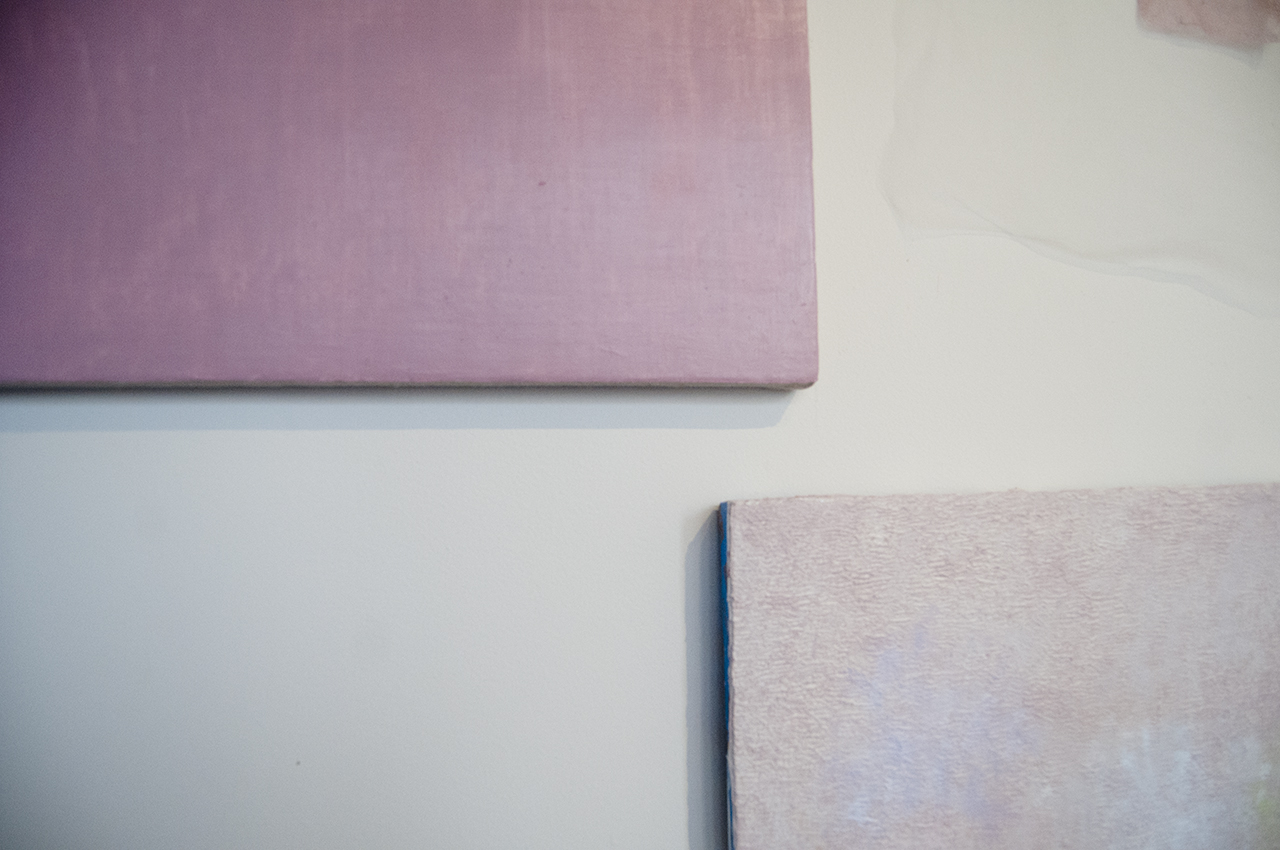
Where is the circle within the mural you created for your show at Peregrine Program quoted from?
The whole wall was a quotation from the floor of the set that was used on a BBC sitcom from the ’70s called “Are You Being Served.” The show is about this department store with a motley cast of characters that work on the men and women’s floor. There is this mincing faggot that works on the men’s side that I loved, and my mom was so uncomfortable with me watching this as a kid that she would often come into the room and shut it off. I am attracted to this character that never explicitly discloses his sexuality, but the innuendo is everywhere. Several years ago my partner Eric gave me the box set of DVDs of the whole series. We were watching them, and in one of the episodes the camera pans up and you see the floor of this department store. Everything that happens in these episodes is camp and sexual innuendo and over the top and it is outrageous, and then when the camera pans up the floor is this gray and white grid with a pink circle hovering in the center of it. It looks like an Eva Hesse or early Lynda Benglis or Olivier Mosset or Agnes Martin. Suddenly it is this vocabulary of Post-Minimalism that is happening at the exact same time as this camp sitcom. That is a great example of one of those moments of convergence where all of these fragments that are floating in my head at any given moment come together. I am thinking about reconciling the over the top parts of my sensibility with things that are pretty austere and authorless because they are already borrowing from all of these artists that I am name dropping.
What are the culture fragments that are always spinning through that gather temporarily enough to be me or you? That becomes one of the nods of the work, understanding that perspective, and it is a bit like a disco ball. It is this geometry, but it is always reflecting and pulling in and then spraying back outward all of these little bits.
Can you explain your reasoning for bringing the element of perfume into many of your exhibitions and how it relates to the work?
It is an element that has happened for many years, but for a lot of those years it was ritual, kind of like breaking a bottle of champagne on the edge of a launching ship. At the beginning of a show I would break a bottle of perfume. I would shatter it against the wall. In 2013 I did a piece called “sillage” which was at the Block Museum up in Evanston. For the duration of the exhibition I invited some number of the staff to wear a perfume I selected, so each morning when they came into work they sprayed themselves down with the perfume and wore it throughout the day for the full two months the show was up. The perfume aspect kind of changes. Earlier the perfume being shattered marked the space and marked the event, how that intersects with an axis of time at the beginning of an exhibition, then watching it drain away. The sillage piece used the scent to mark the bodies of the staff within the institution at which the piece was happening. It is manifold, it is trying to give a pheromone to the bodies that are already part of the museum—whether they are janitorial staff, directors, the people at the front desk. It is also testing the limits of something kind of sadistic.
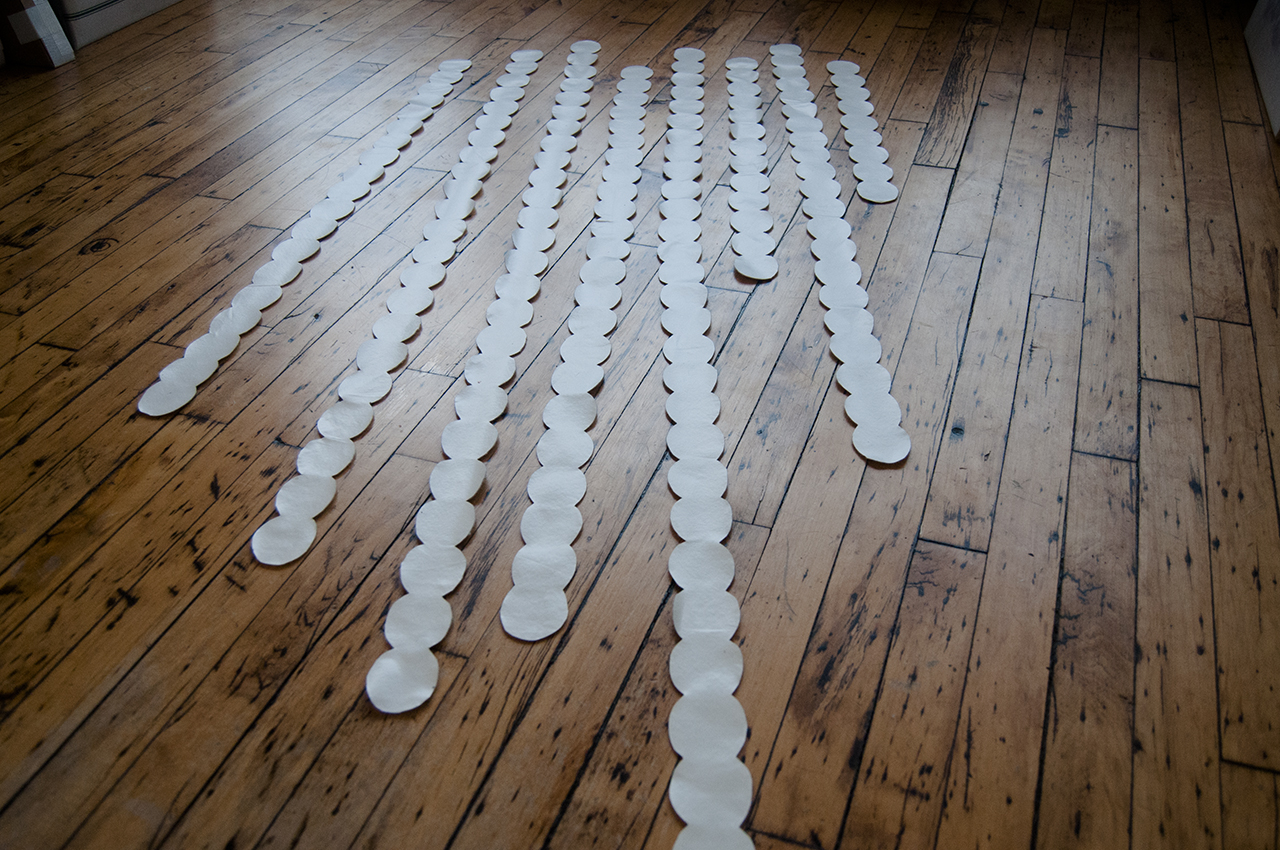
How do you create memory as gesture?
There’s this thing in psychoanalysis called “regression in service of the ego,” and it is something that has been written about in relation to artists. Artists often return to moments in our memory space and re-perform a gesture, returning to an object to mend the ego in ways that it needs. There’s the adolescent bullied version of Matt that was making art, and I will sometimes go back and make those pieces he was making—another place to quote from. It is kind of creepy and psychological but also tender to feel like you are collaborating with a younger version of yourself. Then there is this idea of memory, touch, and mark. It is a way of reaching unprocessed spaces in my own psychological makeup. The rubbings that I make relate to this. It is laying something about my subjectivity or the position I am holding at that moment against something that is structural. With those rubbings, one thing that happens is I am using sandpaper and buffing away a wall and getting through it. I am going in and sanding away the wall and adding a layer of pale color that is of the same tone or value as the wall color, but a different hue. Then I am painting back over with the wall color and sanding back through so you just get enough of the blushy, bruisy hint of the color that is underneath it.
In what ways does your visual practice creep into your writing and vice versa?
I am thinking constantly about regulative social forces and where all of those lines are made to intersect—where they can be interrupted, where they can be queered. I have a few different answers to this because earlier on I would have said something that is still true, but maybe not as interesting. I just think I went to my writing to do things that I didn’t want to make, or conversely my art ends up being a lot less articulate than the writing is. What happens in my studio can be maybe more befuddling or opaque. I think when I was younger I would call them racquetball matches between the writing and the studio, but I think now I am a really selfish writer. I write about things that I want to be thinking about. The writing serves my way of posing questions that get me out into the world and into problems in aesthetics and larger social and political issues that need attention, but my toolbox in the studio isn’t going to be the most effective way to deal with it. Right now my writing is really concerned with who is made to matter and how. I think this is also happening in the studio, but maybe in more slippery and open-ended way.
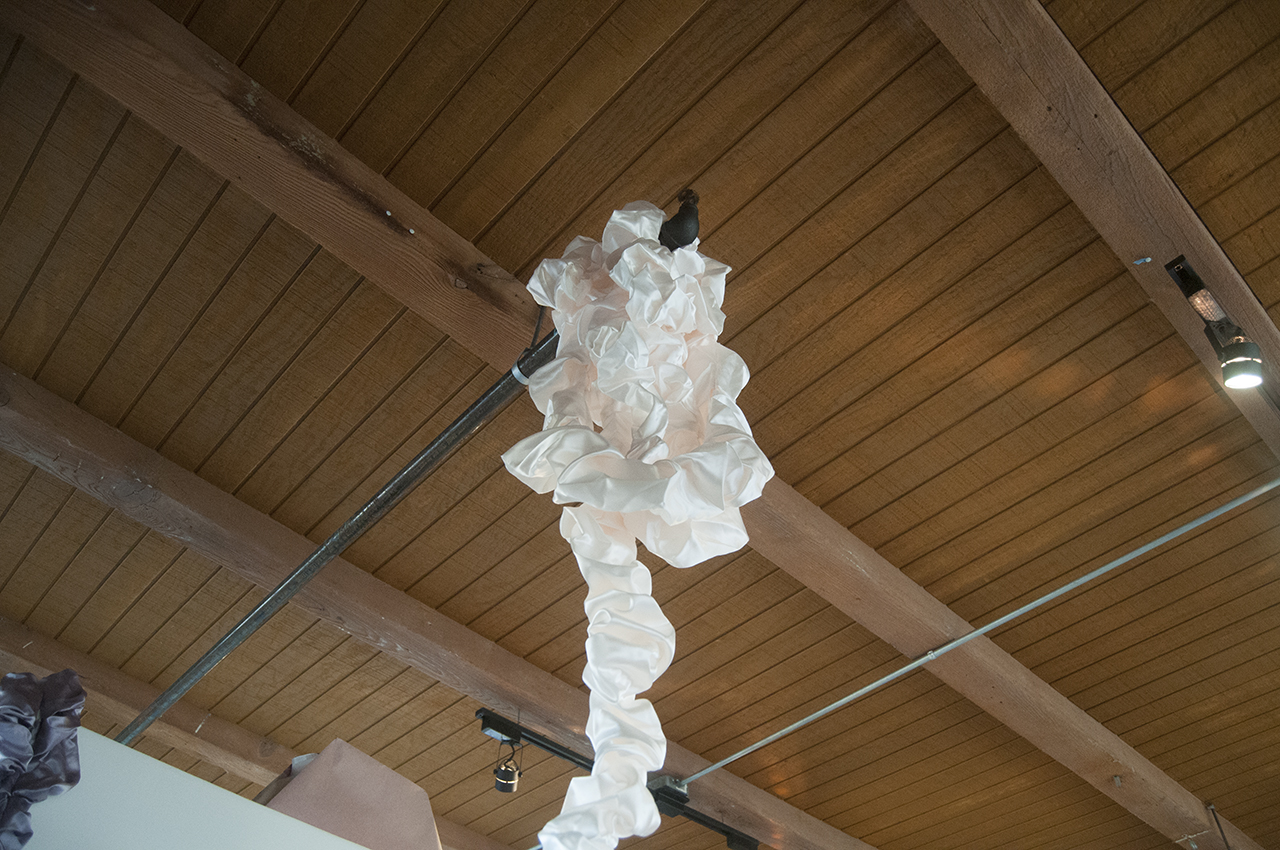
Do you feel as if you are aware of what it is like to not only be the maker, but simultaneously the critic and the audience for your work?
How I wish! I have to say that I wish that all of my other chores and roles offered insight into what I do in the studio. My practice is persistently mysterious to me. I struggle to get any sort of language like what we are using around it. It would be totally believable to me that someone could dismiss any accounts of what I am giving of my work. Sometimes I look at artist’s statements I write and then look over at the wall and think ‘Nope, no obvious relationship.’ I find it very difficult to bring what I know from those other spheres and positions back to my practice. What I do think it affords me is a sensitivity to how the larger system is working.
